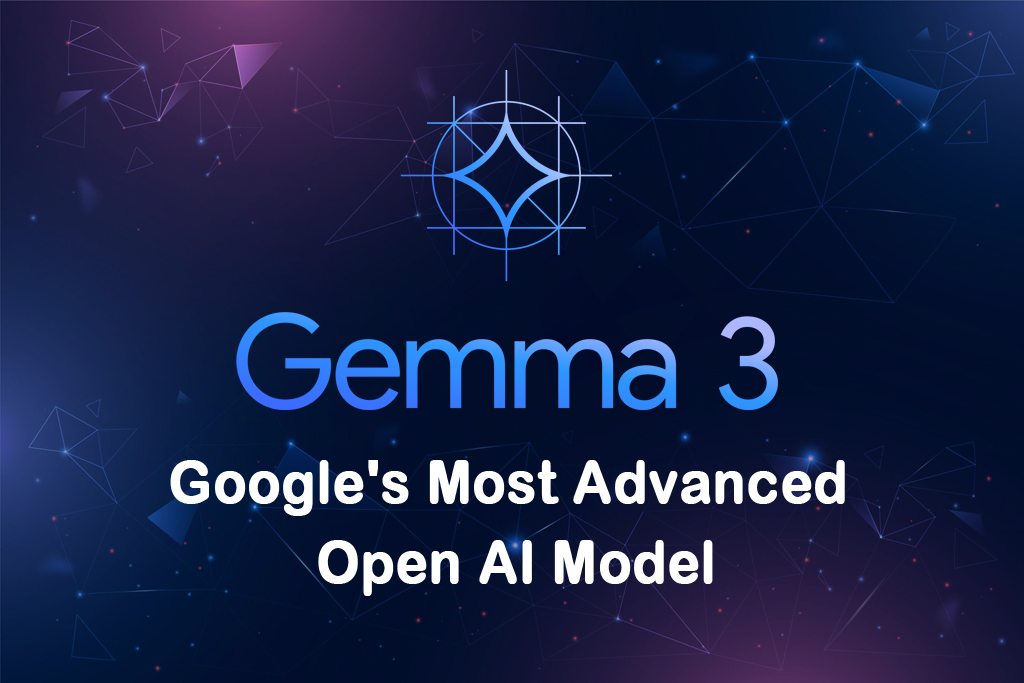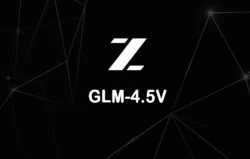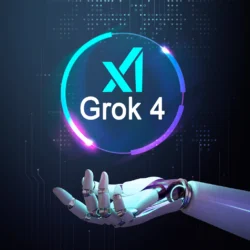Google’s Gemma 3, unveiled on March 12, 2025, represents a significant leap in open-source artificial intelligence, embodying Google’s commitment to making advanced AI accessible to developers and researchers worldwide. Named after the Latin term for “precious stone,” Gemma 3 is a family of lightweight models available in 1B, 4B, 12B, and 27B parameter sizes, designed for efficiency and versatility. With multimodal capabilities for text and image processing, support for over 140 languages, and a 128k token context window, Gemma 3 empowers developers to create innovative AI applications. Its performance, surpassing larger models like Llama3-405B in human preference evaluations, positions it as a leading open model as of today.
Complementing Gemma 3, Google introduced Gemma 3n at Google I/O 2025 on May 20, 2025, a mobile-optimized model that runs efficiently on devices with minimal resources, such as phones and tablets. Supporting text, images, audio, and video, Gemma 3n enhances privacy by enabling offline AI applications. Together, these models, built on the same research as Google’s Gemini models, highlight a strategic focus on accessibility and efficiency, distinguishing them from the broader, high-performance Gemini family.
Key Features of Gemma 3
Gemma 3 is available in four parameter sizes—1B, 4B, 12B, and 27B—each with pre-trained and instruction-tuned variants. It supports multimodal inputs, processing text and images using the SigLIP vision encoder, which handles images up to 896×896 pixels with adaptive windows for higher resolutions or non-square formats. The 128k token context window enables efficient handling of large datasets, while support for over 140 languages makes it suitable for global applications, such as translation and multilingual content generation.
Trained on datasets ranging from 2T tokens for the 1B model to 14T tokens for the 27B model, Gemma 3 leverages Google’s Tensor Processing Units (TPUs) and the JAX Framework. Post-training techniques, including distillation, Reinforcement Learning from Human Feedback (RLHF), RLMF, and RLEF, enhance its capabilities in math, coding, and instruction following. In LMArena evaluations, Gemma 3 achieved a score of 1338, ranking as the top open compact model, outperforming larger models like Llama3-405B and DeepSeek-V3. Safety is prioritized with ShieldGemma 2, a 4B model for image safety moderation, ensuring responsible outputs.
| Feature | Details |
|---|---|
| Model Sizes | 1B, 4B, 12B, 27B (pre-trained and instruction-tuned) |
| Multimodality | Text and image inputs, SigLIP vision encoder, up to 896×896 pixels |
| Context Window | Up to 128k tokens |
| Language Support | Over 140 languages |
| Training Data | 2T (1B), 4T (4B), 12T (12B), 14T (27B) tokens, trained on Google TPUs |
| Performance | LMArena score of 1338, outperforms Llama3-405B |
| Safety | ShieldGemma 2 for image safety moderation |
Technical Advancements and Architecture
Built on the research and technology of Google’s Gemini 2.0 models, Gemma 3 employs a transformer-based architecture with enhancements for efficiency. The SigLIP vision encoder supports robust multimodal processing, and the dialog format allows interleaved text and image inputs, maintaining compatibility with earlier text-only formats. Architectural optimizations reduce the memory overhead of the KV cache during inference, improving efficiency for long-context tasks. RoPE rescaling enables generalization to a 128k context length, with global self-attention layers adjusted to a 1M base frequency and local layers at 10k, enhancing performance on consumer GPUs and TPUs.
Post-training enhancements, such as RLHF and distillation, improve Gemma 3’s ability to handle complex tasks like reasoning, structured outputs, and function calling. These advancements make it versatile for applications ranging from natural language processing to data analysis, positioning it as a highly efficient and adaptable open model.
Gemma 3n: Mobile-First AI
Unveiled at Google I/O 2025, Gemma 3n shares its architecture with Gemini Nano and is optimized for mobile devices, running on less than 2GB of RAM. It offers 1.5x faster response times than Gemma 3 4B, achieved through Per-Layer Embeddings (PLE), KVC sharing, and advanced activation quantization. With a 4B active memory footprint and a nested 2B submodel enabled by MatFormer training, Gemma 3n provides dynamic flexibility for on-device applications. Its privacy-first design supports offline functionality, making it ideal for mobile environments.
Gemma 3n supports multimodal inputs, including audio, text, images, and videos, with enhanced video understanding and high-quality Automatic Speech Recognition and Translation. It excels in multilingual tasks, achieving a 50.1% score on the WMT24++ (ChrF) benchmark, with improvements in Japanese, German, Korean, Spanish, and French. Available in early preview on May 20, 2025, and fully released on June 26, 2025, Gemma 3n is set to power next-generation AI applications on Android and Chrome later in 2025.
| Feature | Details |
|---|---|
| On-Device Performance | 1.5x faster than Gemma 3 4B, runs on <2GB RAM |
| Multimodal Support | Audio, text, images, videos; enhanced video understanding |
| Multilingual Performance | 50.1% on WMT24++ (ChrF), improved in Japanese, German, Korean, Spanish, French |
| Memory Efficiency | 4B footprint with 2B submodel, PLE, KVC sharing, activation quantization |
| Availability | Early preview May 20, 2025; full release June 26, 2025 |
Specialized Models: MedGemma and SignGemma
Google has expanded the Gemma family with specialized models for niche applications. MedGemma, part of the Health AI Developer Foundations program, leverages Gemma 3’s architecture to analyze health-related text and images, supporting applications like radiology image analysis and clinical data summarization. It offers performance comparable to larger models on the MedQA benchmark but is not yet clinical-grade. SignGemma, designed for accessibility, translates sign language to spoken text, focusing on American Sign Language (ASL) and English, empowering developers to create tools for deaf communities.
These models demonstrate Google’s commitment to addressing societal needs through AI, enabling developers to build innovative solutions in healthcare and accessibility while maintaining efficiency and ease of fine-tuning.
Community and Developer Impact
Gemma models have achieved over 150 million downloads by May 2025, fostering a vibrant “Gemmaverse” with over 60,000 model variants, such as SimPO by Princeton NLP and OmniAudio by Nexa AI. Developers can fine-tune and deploy Gemma using tools like Hugging Face Transformers, Ollama, JAX, PyTorch, TensorFlow, and Google AI Edge, supporting platforms like Vertex AI and local environments. The Gemma 3 Academic Program offers $10,000 in Google Cloud credits to support research, with applications open for four weeks.
However, some developers have raised concerns about Gemma’s custom licensing terms, which include use restrictions that may limit commercial applications. It raise debates on about whether these terms align with traditional open-source principles, with some arguing they create uncertainty for commercial adoption. Google maintains that the license supports responsible commercial use, balancing openness with ethical considerations.
| Aspect | Details |
|---|---|
| Adoption | Over 150 million downloads by May 2025 |
| Community Variants | Over 60,000 in the Gemmaverse (e.g., SimPO, Bulgarian LLMs, OmniAudio) |
| Developer Tools | Hugging Face Transformers, Ollama, JAX, PyTorch, TensorFlow, Google AI Edge |
| Licensing Concerns | Custom license with use restrictions, debated for commercial use |
How Gemma is Different from Google Gemini
Google’s Gemma and Gemini are both products of Google’s advanced AI research, but they serve distinct purposes and cater to different audiences. Below is a detailed comparison highlighting their key differences:
| Aspect | Gemma | Gemini |
|---|---|---|
| Purpose and Audience | Lightweight, open-source models for developers and researchers, focusing on accessibility and efficiency. | Proprietary, high-performance models for broad applications, integrated into Google’s ecosystem. |
| Model Sizes | 1B, 4B, 12B, 27B (Gemma 3); optimized for consumer hardware. | Larger models (e.g., Ultra, Pro, Flash, Nano); designed for complex tasks. |
| Multimodality | Gemma 3: Text and images; Gemma 3n: Text, images, audio, video (mobile-optimized). | Fully multimodal (text, images, audio, video, code) from inception. |
| Deployment | Open-source, deployable on laptops, mobiles, and cloud platforms like Vertex AI. | Proprietary, accessible via Google AI Studio, Vertex AI, and Google services. |
| Licensing | Open-source with custom terms; some commercial use restrictions. | Proprietary, controlled by Google with no open-source access. |
| Performance | Outperforms larger models like Llama3-405B in specific tasks; efficient. | State-of-the-art across benchmarks, excels in complex reasoning and coding. |
| Context Window | Up to 128k tokens (Gemma 3). | Up to 2M tokens (Gemini 2.0 Pro). |
| Specialized Variants | MedGemma (health), SignGemma (accessibility), CodeGemma (coding). | Fewer specialized variants; focus on general-purpose capabilities. |
| Community | Vibrant “Gemmaverse” with 60,000+ variants; encourages customization. | Limited community customization due to proprietary nature. |
- Purpose and Accessibility: Gemma is designed to be lightweight and open-source, enabling developers to integrate AI into applications on resource-constrained devices like laptops and mobiles. Gemini, conversely, is Google’s flagship AI model, aimed at powering complex, enterprise-level applications and consumer products like the Gemini app and Google Workspace.
- Size and Performance: Gemma models are smaller (up to 27B parameters), optimized for efficiency, and can outperform larger models in specific tasks. Gemini models, such as Gemini 2.5 Pro, are larger and designed for high-performance tasks, topping benchmarks like LMArena for advanced reasoning and coding.
- Multimodality: While Gemma 3 supports text and image inputs, Gemma 3n extends to audio and video, optimized for mobile devices. Gemini is fully multimodal, handling text, images, audio, video, and code, making it more versatile for diverse inputs.
- Deployment and Licensing: Gemma’s open-source nature allows deployment across various platforms, but its custom licensing terms have sparked debate about commercial use. Gemini is proprietary, accessible only through Google’s APIs and services, ensuring tighter control.
- Community and Ecosystem: Gemma’s open-source model fosters a vibrant community with extensive customization, while Gemini’s proprietary nature limits external modifications, focusing on Google’s ecosystem integration.
Deployment Options and Tools
Gemma 3 offers flexible deployment options, including Vertex AI, Cloud Run, Google GenAI API, and NVIDIA API Catalog. It is optimized for Google Cloud TPUs, AMD GPUs via the ROCm™ stack, and CPUs via Gemma.cpp, catering to diverse hardware environments. Quantized versions enhance performance and reduce computational requirements, making Gemma 3 suitable for both cloud-based and on-device applications. Developers can access Gemma 3 through Google AI Studio, Kaggle, or Hugging Face, with comprehensive documentation available.
| Platform | Description |
|---|---|
| Vertex AI | Managed platform for scaling machine learning projects |
| Cloud Run | Serverless environment for running Gemma models with Ollama |
| Google GenAI API | API access for integrating Gemma into applications |
| NVIDIA API Catalog | Optimized for NVIDIA GPUs, from Jetson Nano to Blackwell chips |
| Google Cloud TPUs | High-performance computing for large-scale AI tasks |
| AMD GPUs (ROCm™) | Supports AMD hardware for efficient model execution |
| Gemma.cpp | Enables CPU-based execution for local environments |
Conclusion
Google’s Gemma 3 and its variants, including Gemma 3n, MedGemma, and SignGemma, represent a transformative step in open-source AI, offering lightweight, efficient models for developers and researchers. Distinct from the proprietary Gemini models, Gemma prioritizes accessibility and portability, enabling applications on diverse devices while fostering a vibrant community. Despite licensing debates, Gemma 3’s advanced capabilities and widespread adoption position it as a solid base of responsible AI development.







